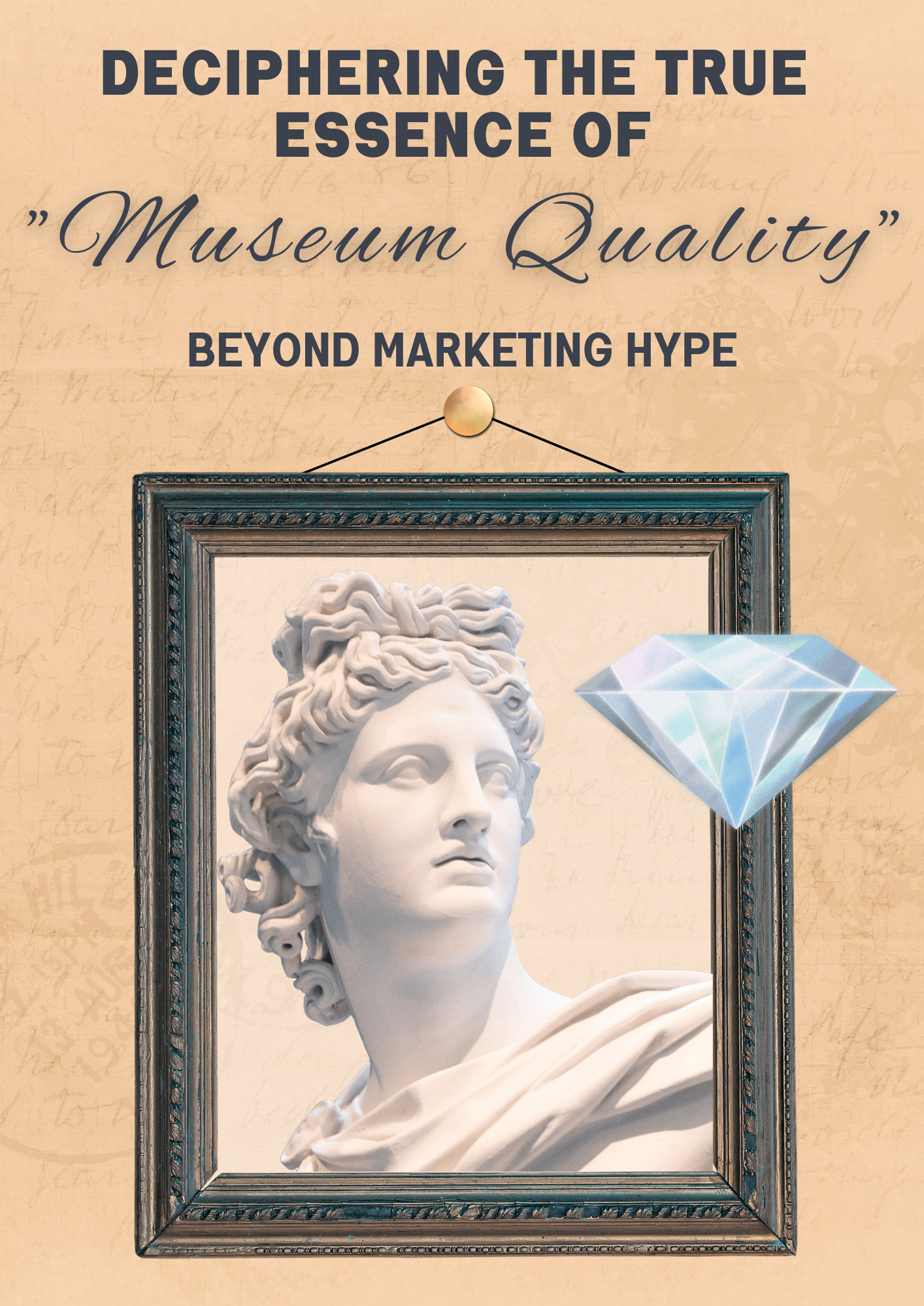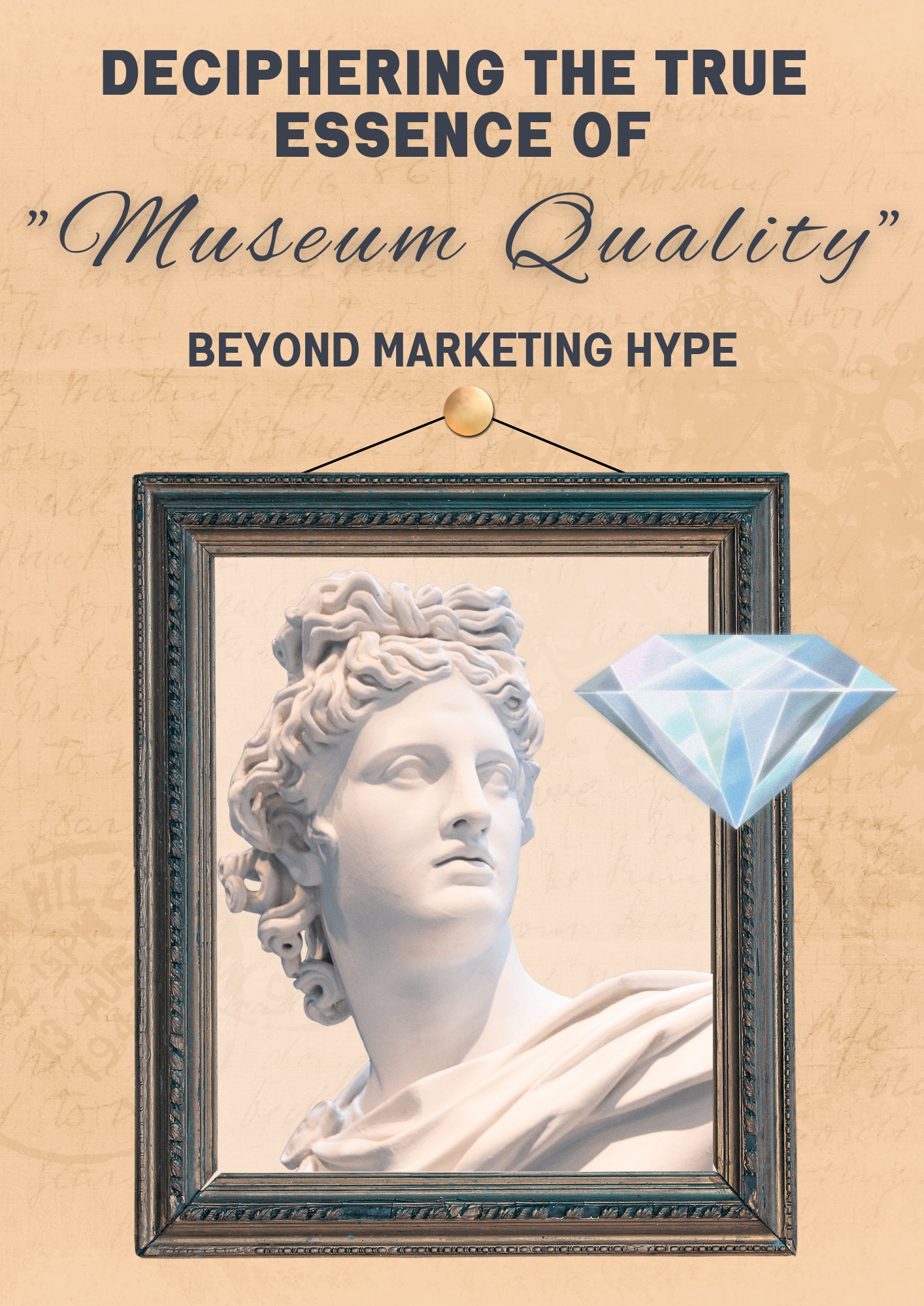
In the world of mineral collecting, the term "museum-quality" is often bandied about by sellers seeking to elevate their offerings. But what does it truly mean for a mineral specimen to be deemed worthy of museum display?
In this exploration, we peel back the layers of marketing hype to uncover the essence of what defines a specimen as "museum-quality" and the rigorous criteria that underpin this designation.
The Misuse of the Term:
Walk into any gem and mineral show or browse online listings, and you'll likely encounter claims of "museum-quality" specimens. Yet, the ubiquity of this label raises questions about its authenticity and significance. In reality, the term is often overused and misapplied, serving more as a marketing ploy than a true reflection of a specimen's merit.
Understanding True Museum-Quality:
To separate the genuine from the hyperbole, it's essential to delve into the criteria that distinguish true museum-quality minerals. While these criteria may vary depending on the perspective of collectors, curators, and scientists, several key factors consistently emerge:
Rarity and Uniqueness:
True museum-quality minerals are inherently rare and possess characteristics that set them apart from common specimens. Whether it's a mineral occurring in an exceptionally large crystal size, a unique color variation, or an unusual crystal habit, rarity plays a pivotal role in determining a specimen's museum worthiness.
Scientific Significance:
Beyond their aesthetic appeal, museum-quality minerals hold significant scientific value. They may represent new mineral discoveries, contribute to our understanding of geological processes, or exhibit unusual crystal structures that challenge existing paradigms. These specimens become invaluable tools for researchers, offering insights into Earth's history and evolution.
Geological Context:
A museum-worthy specimen is not merely a standalone curiosity but a piece of a larger puzzle. Its geological context provides crucial information about its formation environment, mineral associations, and the processes that shaped it. Understanding these contextual factors enhances the specimen's scientific value and enriches its storytelling potential.
Aesthetic Beauty and Preservation:
While scientific significance takes precedence, aesthetic beauty remains a defining characteristic of museum-quality minerals. These specimens possess a rare combination of visual appeal and scientific value, captivating the eye with their vibrant colors, intricate crystal structures, and flawless formations. Equally important is the specimen's condition and preservation, ensuring its longevity and integrity for future generations.
Curatorial Standards:
Museum collections adhere to rigorous curatorial standards, guided by principles of documentation, conservation, and accessibility. Specimens deemed museum-quality undergo thorough evaluation and documentation processes, accompanied by detailed provenance records, scientific analysis, and conservation measures to ensure their preservation and integrity.
The Importance of Discernment:
In a marketplace saturated with exaggerated claims and inflated prices, exercising discernment is paramount for collectors and enthusiasts. True museum-quality specimens are rare gems, deserving of recognition for their scientific significance, aesthetic beauty, and geological significance. By understanding the criteria that define museum-worthy minerals, collectors can make informed decisions and contribute to the preservation and appreciation of Earth's geological treasures.
The term "museum-quality" carries weight and significance beyond mere marketing rhetoric. True museum-quality minerals embody the rare convergence of scientific significance, aesthetic beauty, and geological context, standing as testament to Earth's rich and complex history. By upholding rigorous standards of discernment and appreciation, collectors and enthusiasts play a vital role in preserving these natural wonders for future generations to admire, study, and cherish.
Next blog post: Crystal Adaptogens: BG3 Ocean Jasper (rocksity.com)
All information presented in this blog post is the intellectual property of the author. No part of this content may be reproduced, distributed, or transmitted in any form or by any means without the express permission of the author. Unauthorized use of the content is strictly prohibited and may result in legal action. Please contact the author for permission to use any material from this blog post.

